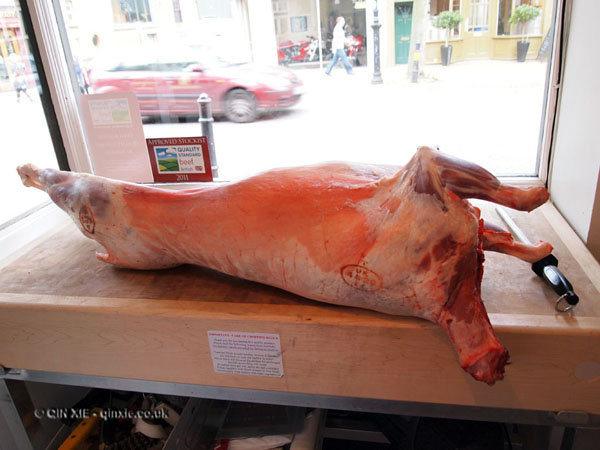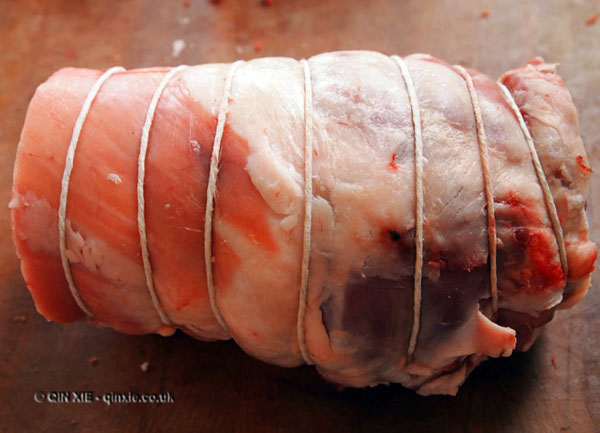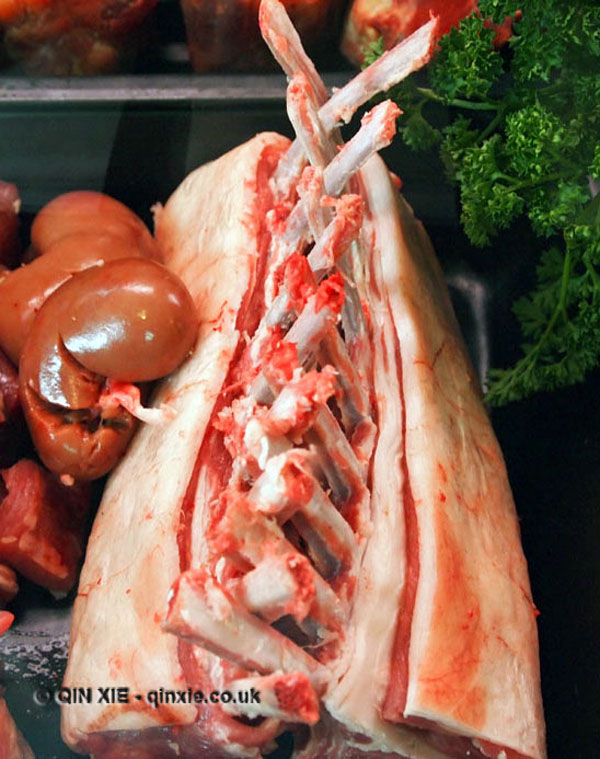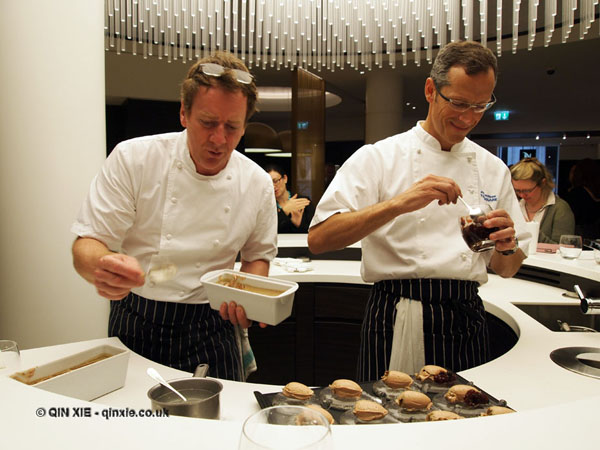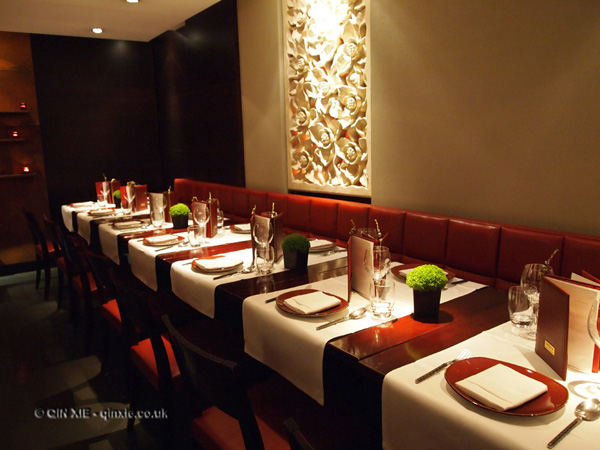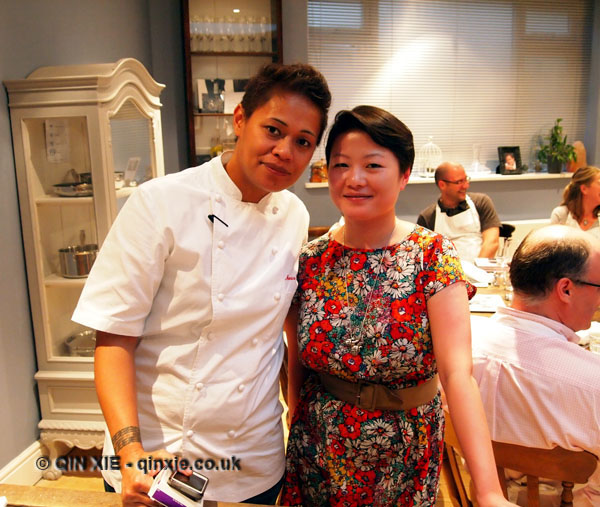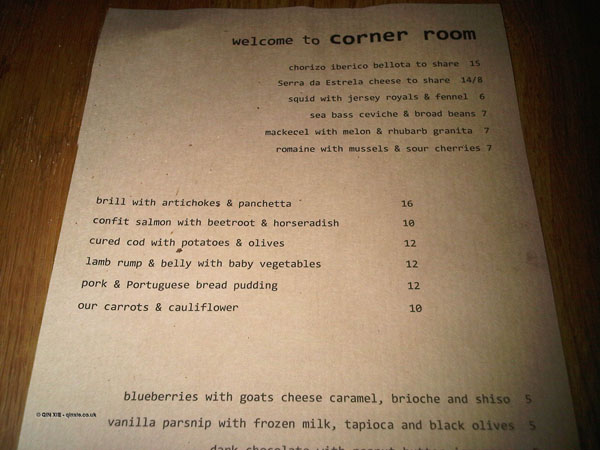Sessions with my butcher: one whole lamb
On the last session with my local butcher, Cleavers of Old York Road, Wandsworth, I jointed a chicken and broke down a leg of lamb. This time we’ve stepped up into a whole lamb.
When it’s hung up in the freezer, you always think “that looks quite small”. And considering the amount of wool and skin that’s been removed, it is. But it’s still a hefty bit of meat that’s too heavy for me to carry.
We started by taking off the top section that’s the shoulder of lamb by cutting along the 5th rib from the neck. The knife runs surprisingly easy down the side once you break through the fatty edge at the top on the first cut. Then you have to saw through the spine leaving the top section with the shoulder and the bottom section with the rack, belly and leg of lamb. Before you can remove the shoulder of lamb from the ribs, you also need to saw off the scrag, that is, the neck stump.
This video is a pretty good overview of the shoulder prepping and rolling process.
[youtube=http://www.youtube.com/watch?v=WUfxBD3G2wM]
Once you have your top section of the lamb, place the cut on the board with the spine at the bottom. Using the tip of a boning knife, you need to cut as close to the rib as possible, scraping the meat away from the rib. Gravity will help to pull the meat away from the rib too. Towards the base of the rib, the bone curves round so you will need to follow the line, otherwise you will end up cutting into the neck fillet like I did. Doing this on both sides of the ribcage will give you two shoulders of lamb.
To prepare the shoulder for rolling, the first thing you need to do is joint the shank. To do this just pull the leg down, opening what’s effectively the elbow joint, and cut through the meat, then prise open the joint.
Once you’ve removed the shank, there are two remaining bones that need to be removed. The leg bone is pretty easy to spot and it’s just a matter of tunneling in from both ends, scraping the meat off the bone, to remove it. The shoulder-blade is a lot harder as you need to carve it out from the shoulder. It should be somewhere in the middle of the shoulder, fairly close to the surface of the meat rather than the skin, and you will need to carve the meat away from all sides.
After you’ve removed all the bones, you will also need to trim the excess fat, tendons and glands. These are all pretty easy to spot being white rather than the pink flesh. There’s also a paddywack on one of the sides that you will need to remove. Finally all you need to do is roll the lamb shoulder by folding in the meat from both sides and tying butchers’ knots around the joint, starting from the middle and then moving your way in from both sides.
The next two sections are comparatively easier to do. First cut out the rack of lamb by basically cutting off the entire section with ribs. The next section is the belly of lamb, which joins on to the leg of lamb.
The rack of lamb is what creates the crowns and shanks that you see displayed. To separate them from the spine, you will need to saw through the ribs from the inside without cutting through the flesh. Then you will need to carve around the spine at the base to remove the shank.
To create that classic exposed bones look, put the rack of lamb on the board skin side up. Cut, using the bit where the flesh begins to plump up as a guide, lengthways along the rack and then scrape the meat off the bone. You need to remove the flesh on the side that has less meat of course, in other words, where it was further from the spine. Then it’s on to the time-consuming job of removing all the flesh from the exposed bone, including the areas between the bones.
The belly of lamb doesn’t require much work except to remove it from the spine by carving around the bone. And of course the leg of lamb is the same as before. And that makes up a whole lamb.
